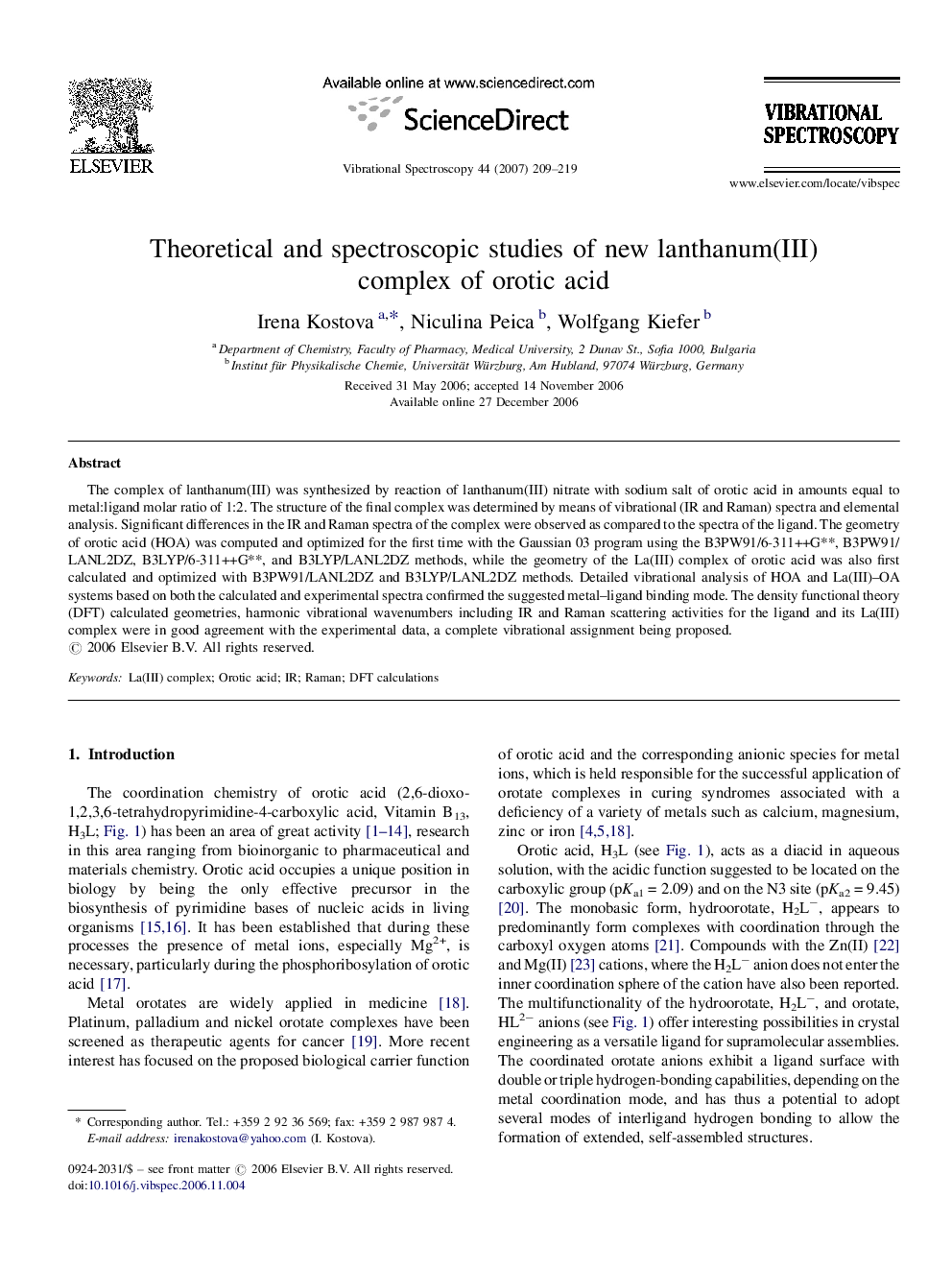| Article ID | Journal | Published Year | Pages | File Type |
|---|---|---|---|---|
| 1249796 | Vibrational Spectroscopy | 2007 | 11 Pages |
The complex of lanthanum(III) was synthesized by reaction of lanthanum(III) nitrate with sodium salt of orotic acid in amounts equal to metal:ligand molar ratio of 1:2. The structure of the final complex was determined by means of vibrational (IR and Raman) spectra and elemental analysis. Significant differences in the IR and Raman spectra of the complex were observed as compared to the spectra of the ligand. The geometry of orotic acid (HOA) was computed and optimized for the first time with the Gaussian 03 program using the B3PW91/6-311++G**, B3PW91/LANL2DZ, B3LYP/6-311++G**, and B3LYP/LANL2DZ methods, while the geometry of the La(III) complex of orotic acid was also first calculated and optimized with B3PW91/LANL2DZ and B3LYP/LANL2DZ methods. Detailed vibrational analysis of HOA and La(III)–OA systems based on both the calculated and experimental spectra confirmed the suggested metal–ligand binding mode. The density functional theory (DFT) calculated geometries, harmonic vibrational wavenumbers including IR and Raman scattering activities for the ligand and its La(III) complex were in good agreement with the experimental data, a complete vibrational assignment being proposed.
Graphical abstractThe lanthanum(III) complex of orotic acid was synthesized and characterized by means of vibrational (IR and Raman) spectra and elemental analysis. The density functional theory (DFT) calculated geometries, harmonic vibrational wavenumbers including IR and Raman scattering activities for the ligand and its La(III) complex were in good agreement with the experimental data, a complete vibrational assignment being proposed. Figure optionsDownload full-size imageDownload as PowerPoint slide
